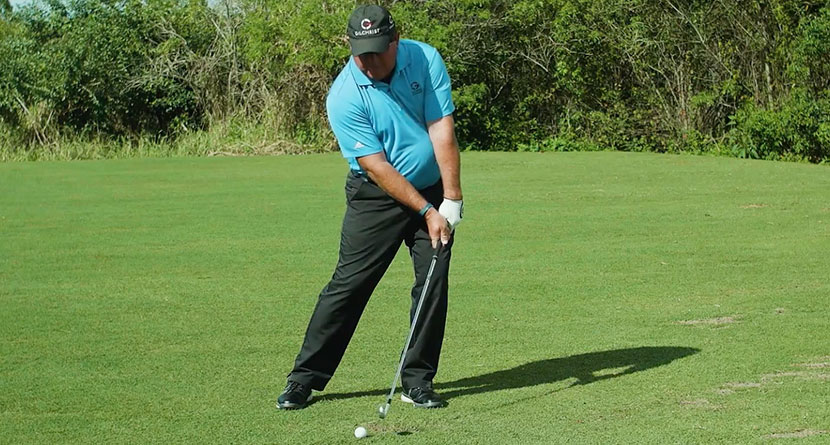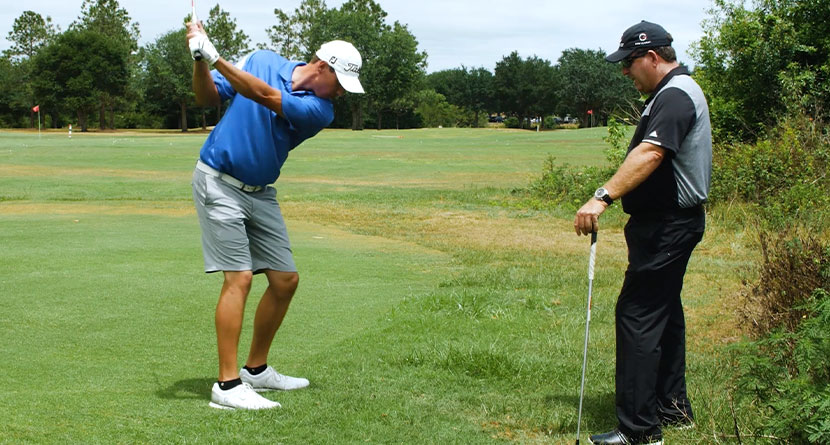Dustin Johnson has had his share of hole-outs this year and the DJ train kept rolling at the RBC Canadian Open after a slight derailment at the Open Championship. During his first round at Glen Abbey Golf Club, D.J. found himself greenside in the bunker for his third shot on the par-5 16th hole. Having only managed an even-par score through his first six holes, he was looking for a jumpstart to his round.
The recovery shot required some height to clear the lip of the bunker, and there was approximately 15 feet of green to work with. The slope of the green was working away from Dustin and the shot was playing downwind. These factors added to the difficulty of the shot, but the most important tip amateurs can take away from his exquisite hole out is how Dustin played from fluffy sand.
Many players fail to analyze the consistency of the sand in the bunker. Not anticipating how the club will interact with sand or how the ball will release once it’s on the green leads to poor bunker play. Pros, like D.J., can tell when they walk into a bunker and dig in exactly how the club and ball will behave. More importantly, that instant feedback can tell them what type of shot they need to play.
Here’s how D.J. made a tough shot look like an easy eagle.
The Lie
Fluffy sand tends to slow the club down since there are more grains within the same area, which makes the sand play heavier.
One trick to help read the lie and determine the consistency of the sand is to dig your feet in. This not only lowers the bottom of the swing arc — helping bunker play from any type of sand or lie greenside — but also gives the player a sense of how the sand reacts to being moved. For example, if trying to dig in and you find it hard to lower yourself it is likely you are playing from a thin lie.
This is not considered testing the surface of the sand since you are taking a fair stance. You’re simply using your experience and feel to your advantage.
The Shot
The fluffy and heavy nature requires two things to happen at impact for a successful out: speed and a large amount of sand taken.
To do this we notice D.J. took the club back farther than normal for the length of shot he had and he added a little body turn as well. Following his swing into impact, we see that he hit about three inches behind the ball and took a ton of sand.
The speed and power went into moving all that sand and as a result, the follow through was shorter.
Even doing everything right at the highest level can’t guarantee the ball will behave. This is a great example of how fluffy and heavy sand almost always takes away the ability to impart spin on the ball; the best option is to play for a releasing shot.
Dustin was lucky to hit the flag dead center because the ball would have likely rolled past the hole leaving a lengthy birdie putt.
However, as we know, the harder you work the luckier you get, so the next time you’re facing a difficult bunker shot, take a few extra seconds to feel for the type and depth of the sand before deciding on a shot type.
Who knows, maybe the flag will get in the way and you’ll hole one out yourself.













